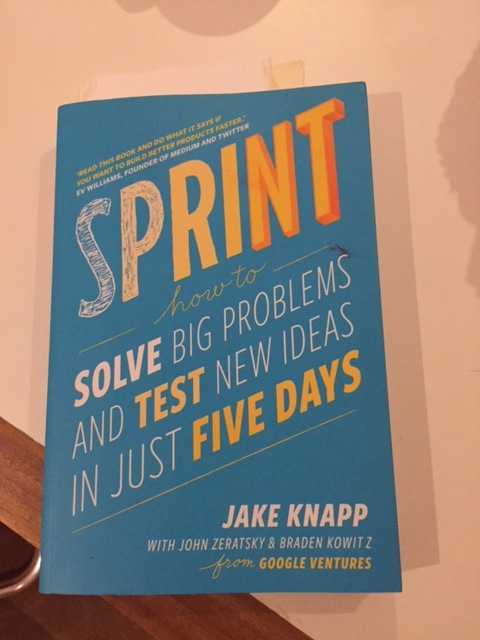Can you imagine solving a big problem in a week?
Well if you can then read on.
I just finished reading Sprint by Jake Knapp et al.(Batam Press, 2016).
It’s a quick, easy and practical read.
Together the 3 authors have run over 100 Sprints from startups to projects with larger organisations so their methodology has been well and truly tested.
I should say from the outset that I love the idea of a Sprint.
As someone who have invented a new accelerated way of thinking called Blitz I know the power of sprinting rather than a slow jog.
Here are some of the aspects of the book I enjoyed:
– The emphasis is on doing rather than endless planning or procrastinating
– The chapter headings which explain what happens each day for the 5 day Sprint was an easy and simple structure,
– The design of the team is vitally important. A small, diverse team (7 or less) is ideal.
– Having a clear, urgent and compelling focus is a fundamental starting point to a successful Sprint (and Blitz for that matter).
– Imagine in today’s age insisting that there are no laptops, phones or ipads. When time is short you cannot be distracted.
– I loved the idea of trying to start at the end and rephrasing assumptions and obstacles into questions e.g. Will customers trust our expertise? (page 57).
– The process itself feels semi-structured which I like in that there are guidelines yet some freedom to change when something new emerges.
– Also there is a great deal of visual communication with customer maps for example.
– The authors also recommend the same approach I use in a Blitz which is to work alone together (page 107). The idea is to start with the individual then move up to the group.
This enhances creativity, diverse perspectives and reduces group think.
The cons:
– However the 5 day structure felt too linear. My experience is that any innovative project has numerous starts, loops, corrections and dead-ends. Using a weekly format did not seem to encourage these forms of feedback cycles.
– Sprint is a great methodology for large problems but what about small, everyday ones?
Could you run shorter Sprints for example?
– What about small business – could this approach be used by say a 3-5 person business?
But all in all I believe the book is required reading for startups, project and innovation teams.

